I can’t really believe how long I’ve been publishing. I launched originally in March 2017 with three editions and then regularly every Thursday since July of that year. Thank you so much for being a subscriber – I do hope you have found my efforts intersting and occasionally fun so I thought this might be a good opportunity to look back and pick out a few favourite subjects.
I really enjoyed researching the background history of drinking fountains and their close connection to the Quaker movement. It was a nice sunny day when I stood in front of this modest little example outside St Sepulchre’s Church on Snow Hill near Holborn Viaduct and recalled a picture of the scene on 20th April 1859 when it was unveiled as the first public drinking fountain in London …
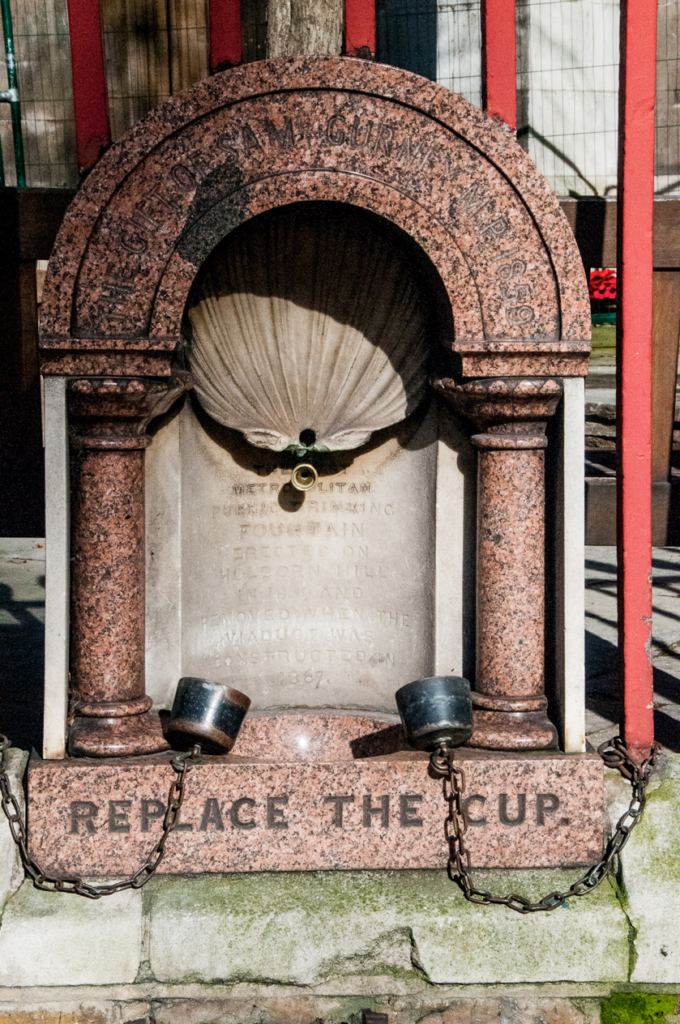
Its opening was an incredibly well-attended event, as recorded by the Illustrated London News …

Read the full blog here – it’s called Philanthropic Fountains.
Emphasising why the water supply had to be totally trusted was explained in the blog relating to this famous pump, still located in Aldgate …
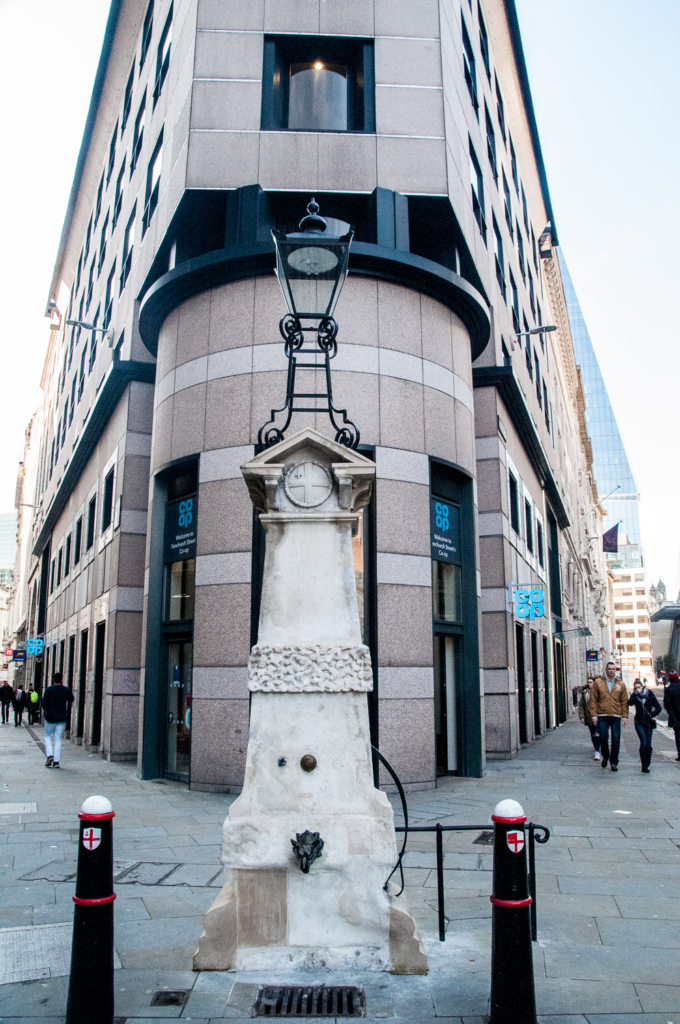
During its passage underground from north London, the pump’s water had passed through and under numerous new graveyards thereby picking up the bacteria, germs and calcium from the decaying bodies. Many people died before this discovery was made. Read the full story in my blog The Pump of Death.
Sundials attracted my attention in September 2017. Especialy this one dating from around 1700 …
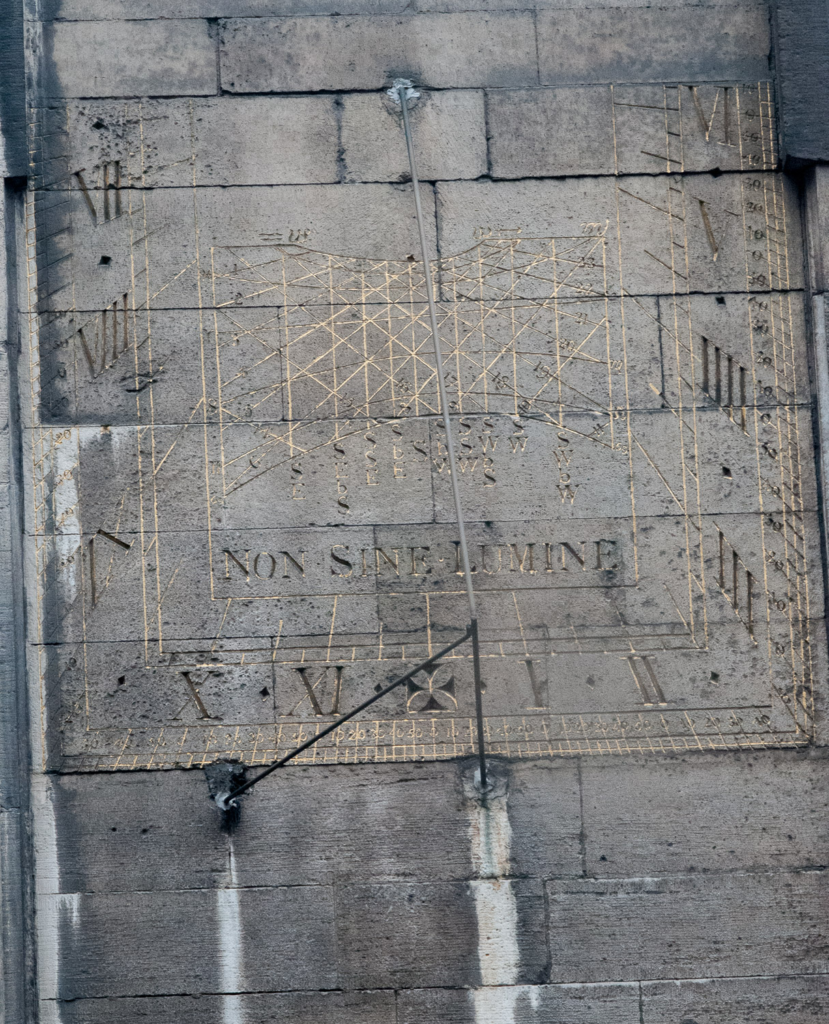
And this one on a building that was once a Protestant church, then a Methodist Chapel, next a Jewish synagogue and now the Brick Lane Mosque. ‘We are but shadows’ …
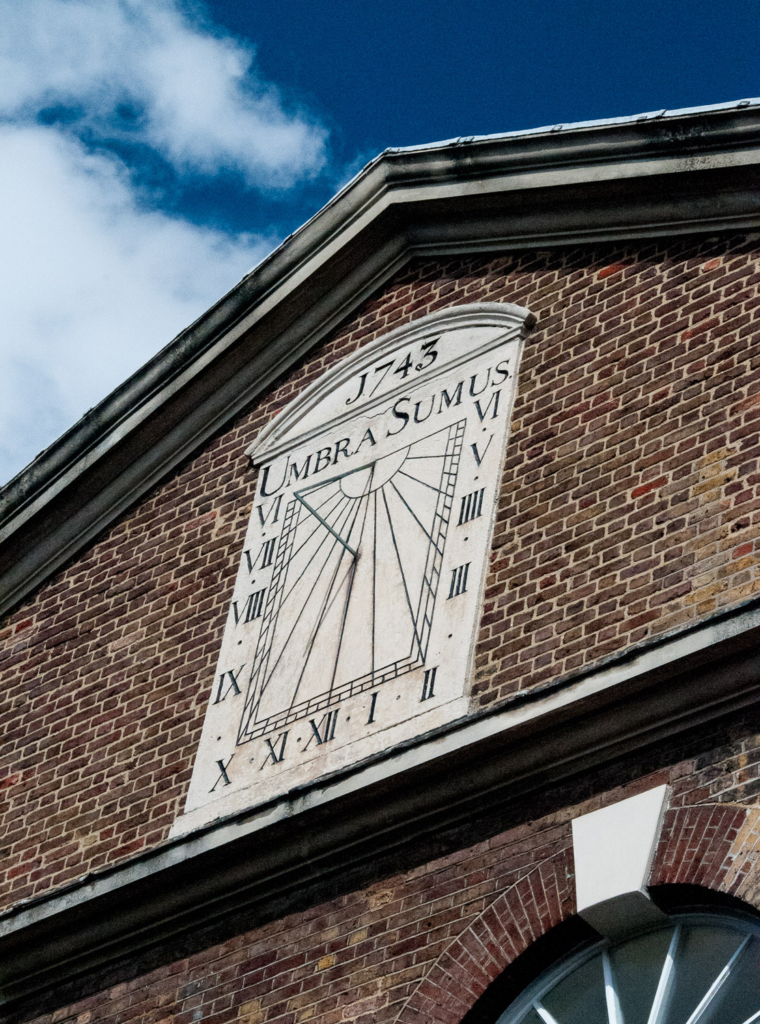
That is also the name of the blog We are but shadows.
If fossils intrigue you you’ll find quite a few in my Jurassic City blog. This one’s on the steps of St Paul’s Cathedral …
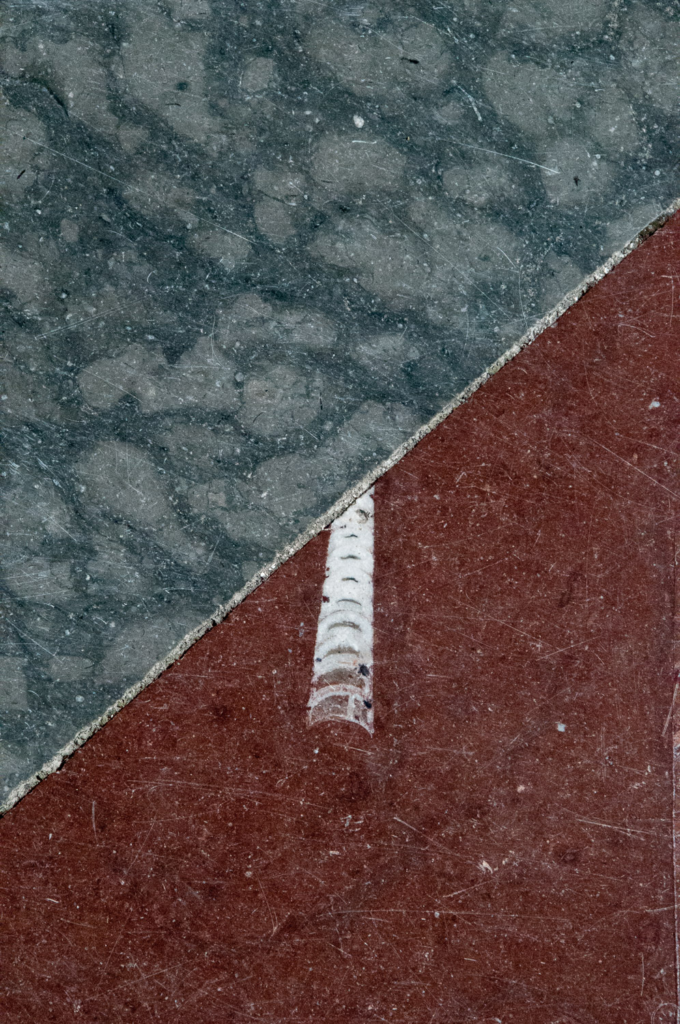
The Church of St Dunstan-in-the-West rewarded my visit with some fascinating memorials.
The one to the Honest Solicitor …
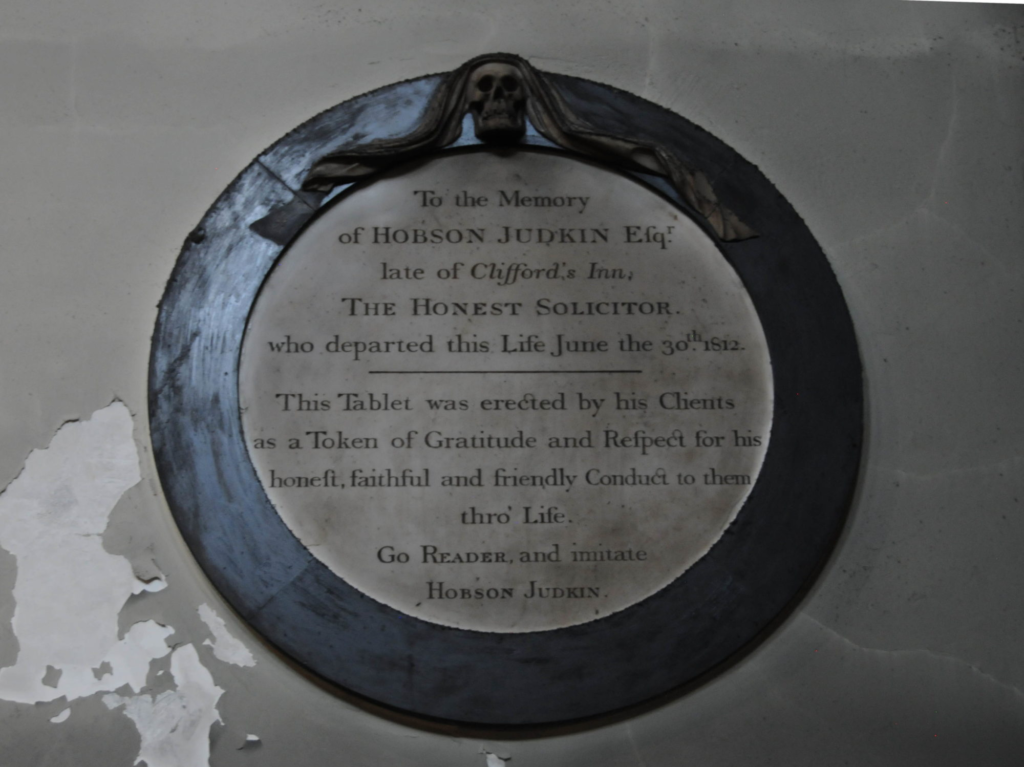
The tragically drowned son …
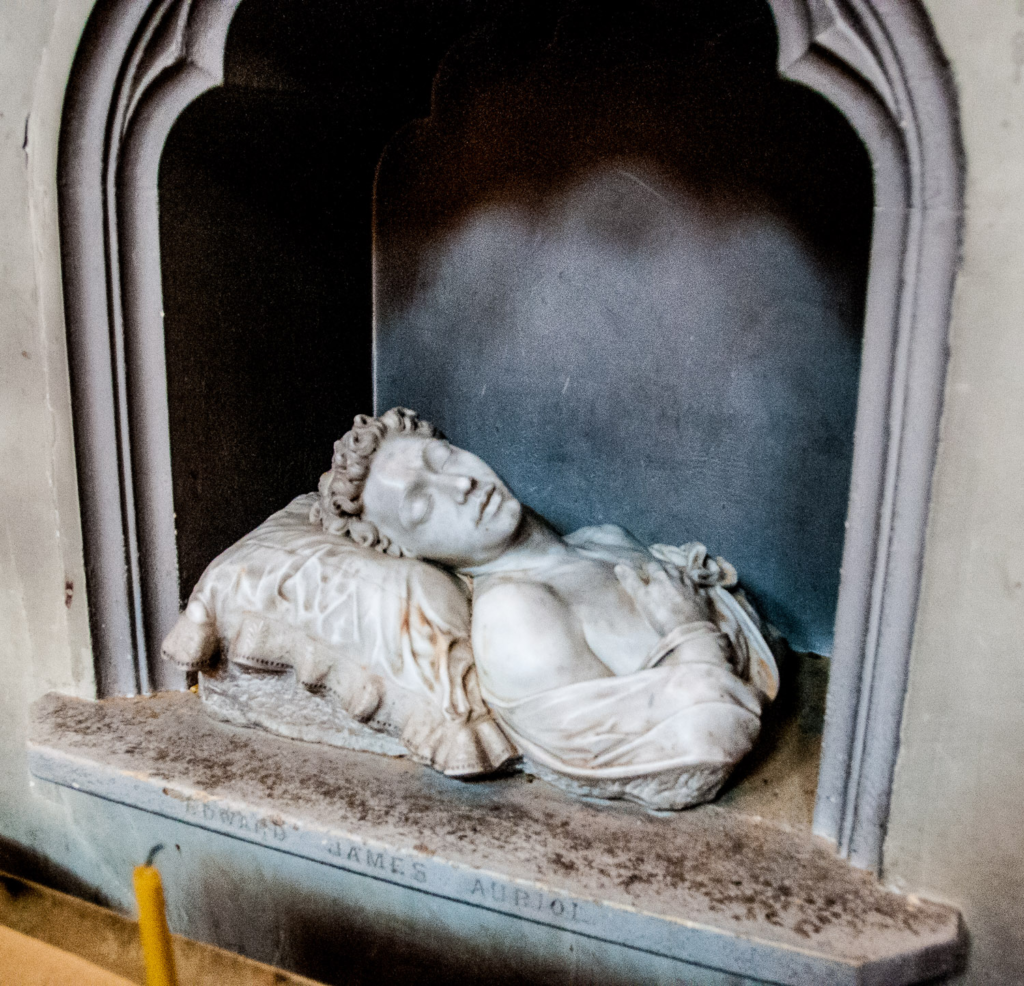
And a famous swordsman …
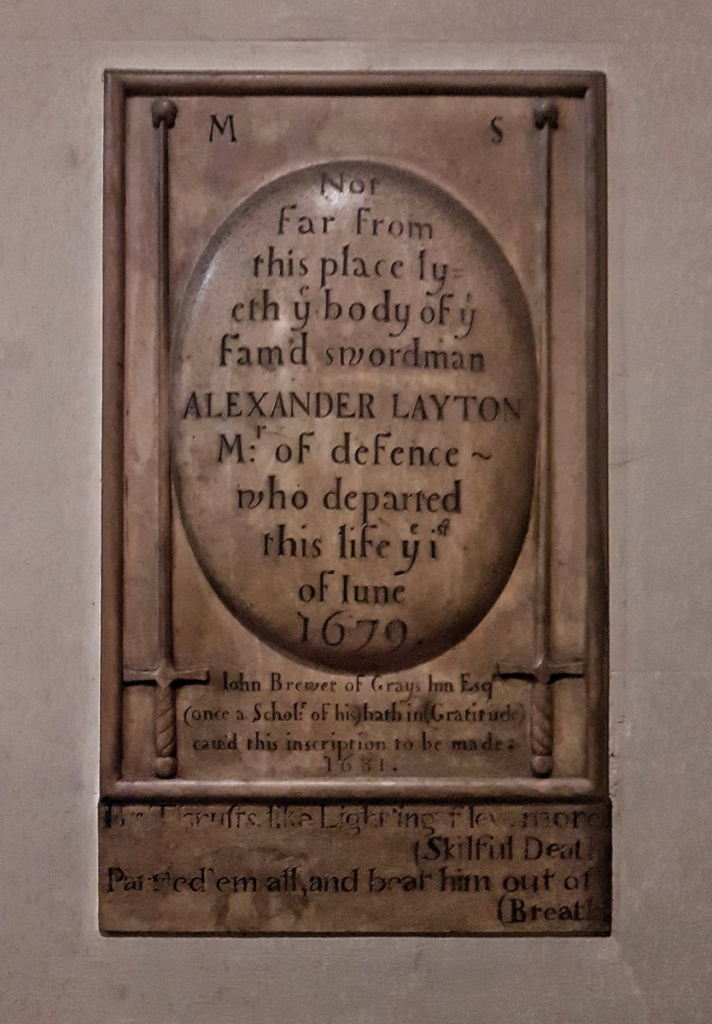
The wealth created by the City encouraged philanthropic giving and what a pleasure it was to enter the church of St Botolph Without Aldgate and come face to face with this distinguished gentleman …
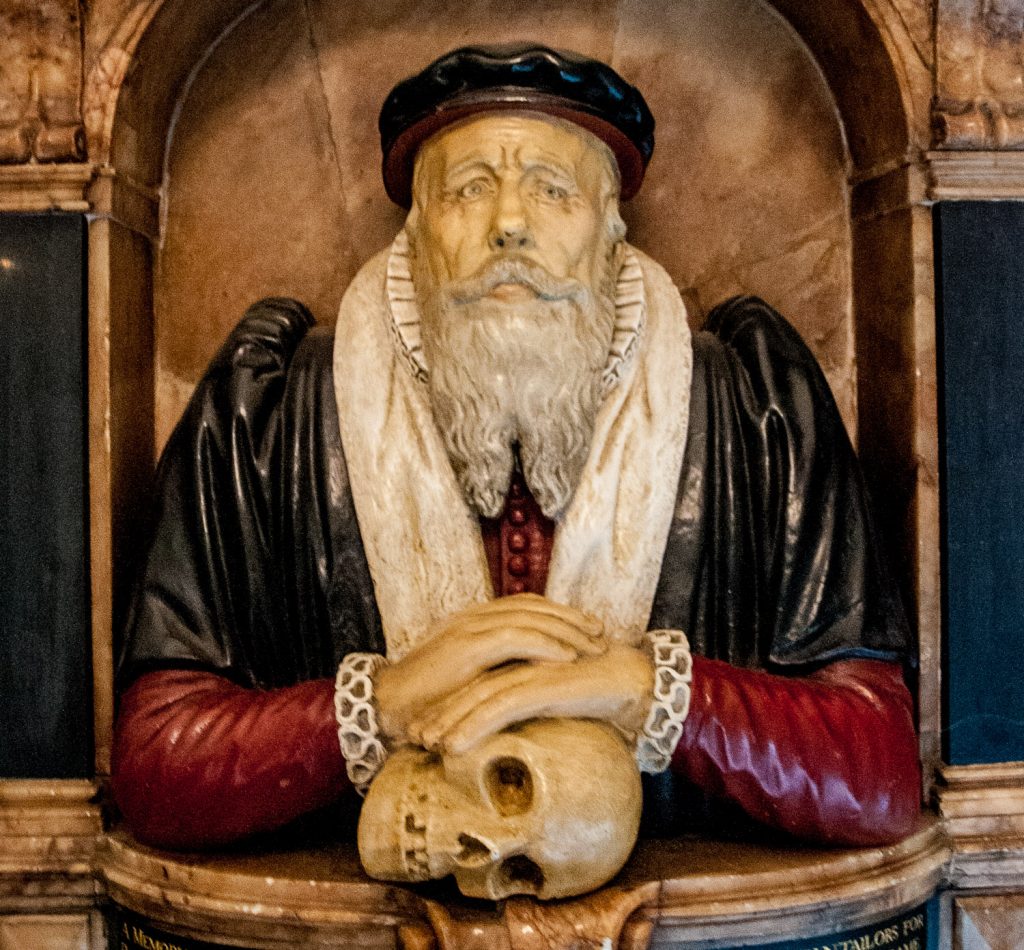
Robert Dow was a Master of the Merchant Taylors and during his life gave away a substantial sum to various charitable establishments. The value of his donations and those receiving the money are listed on his monument …
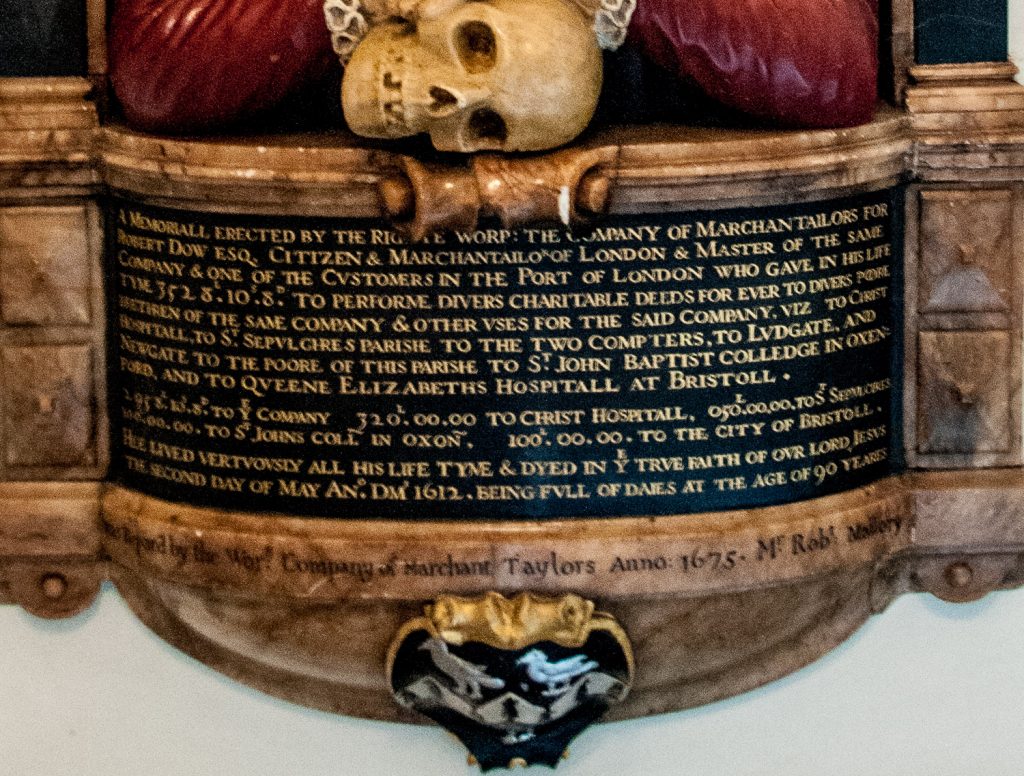
He lived to the great age of 90 and died in 1612. I love the expression that, when he eventually passed away, he was ‘full of days’. The skull his hands are resting on may be to remind us that we too are mortal, even as we relax and enjoy his company and read of his generosity.
There are other fascinating memorials nearby and you can read about them here.
Personal bravery is commemorated in many City churches and you’ll find this one in St Stephen Walbrook.
Sometimes I look at church memorial plaques and, if they are entirely in Latin, just rather lazily move on. In this case it was a big mistake since I was ignoring a tribute to a very brave man …
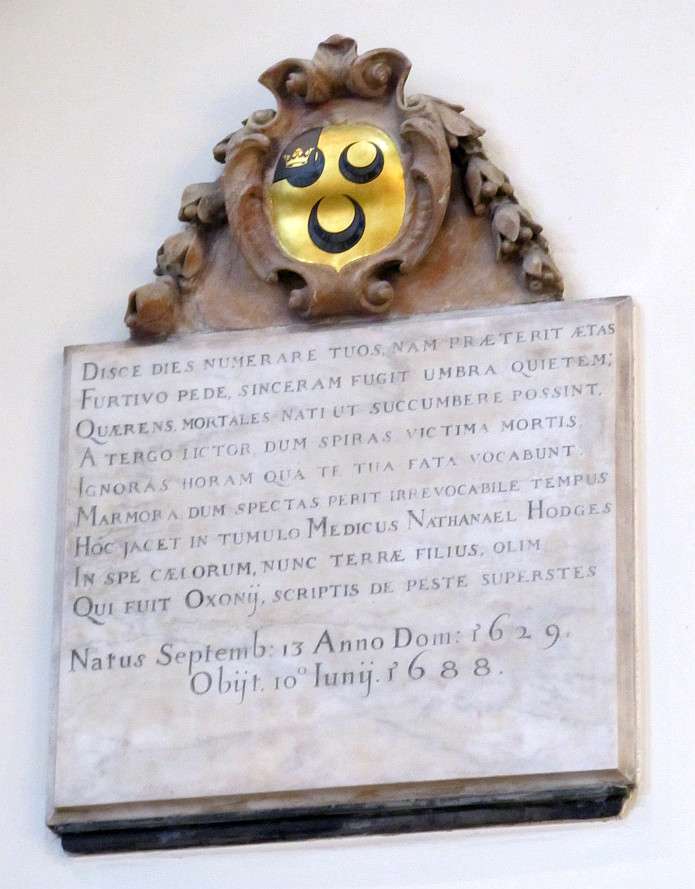
Unlike many physicians, Dr Hodges stayed in London throughout the time of the terrible plague of 1665.
First thing every morning before breakfast he spent two or three hours with his patients. He wrote later …
Some (had) ulcers yet uncured and others … under the first symptoms of seizure all of which I endeavoured to dispatch with all possible care …
hardly any children escaped; and it was not uncommon to see an Inheritance pass successively to three or four Heirs in as many Days.
After hours of visiting victims where they lived he walked home and, after dinner, saw more patients until nine at night and sometimes later.
He survived the epidemic and wrote two learned works on the plague. The first, in 1666, he called An Account of the first Rise, Progress, Symptoms and Cure of the Plague being a Letter from Dr Hodges to a Person of Quality. The second was Loimologia, published six years later …
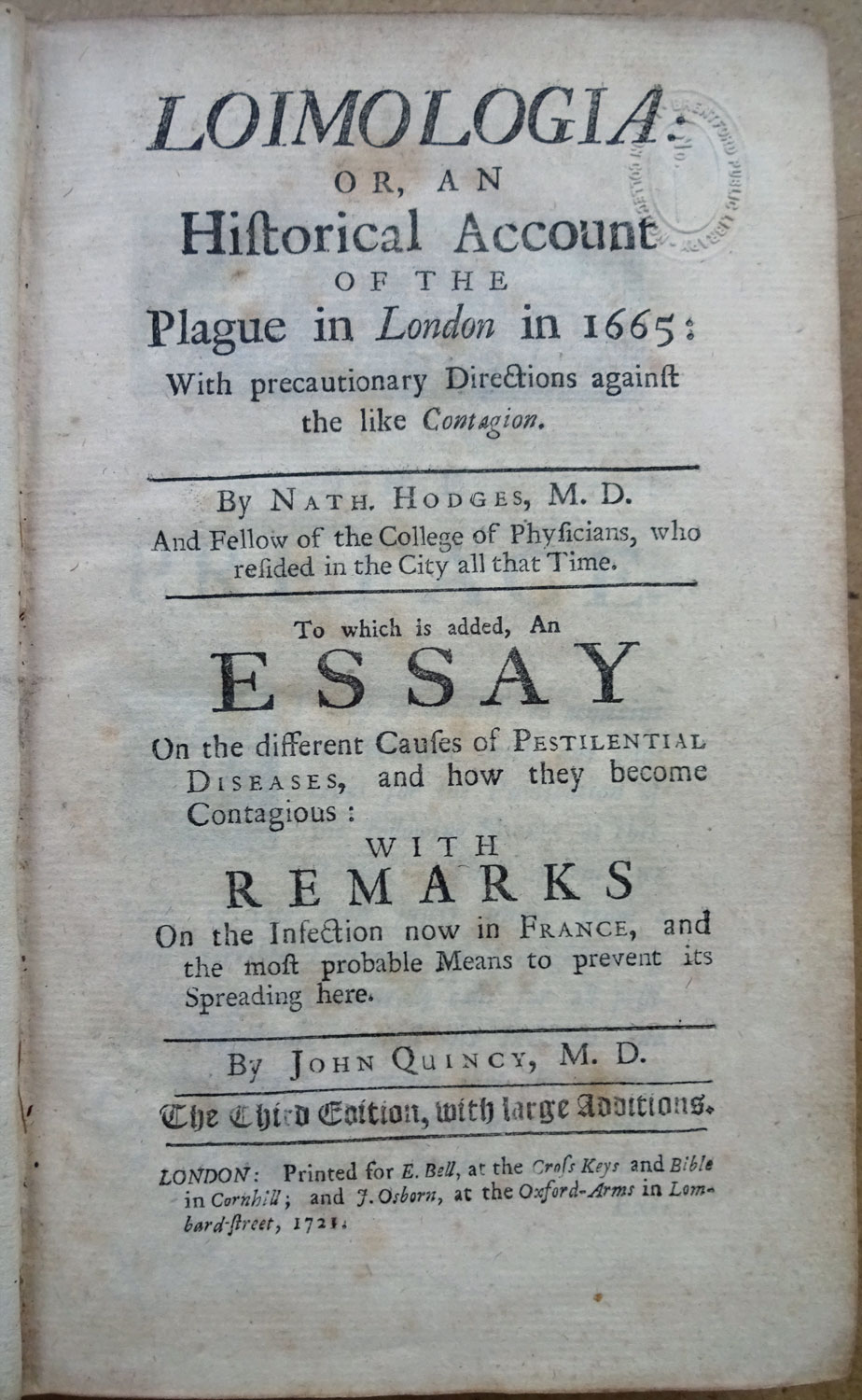
A later edition of Dr Hodges’ work, translated from the original Latin and published when the plague had broken out in France.
It seems particularly sad to report that his life ended in personal tragedy when, in his early fifties, his practice dwindled and fell away. Finally he was arrested as a debtor, committed to Ludgate Prison, and died there, a broken man, in 1688.
His memorial is on the north wall and this is a translation from the Latin …
Learn to number thy days, for age advances with furtive step, the shadow never truly rests. Seeking mortals born that they might succumb, the executioner [comes] from behind. While you breathe [you are] a victim of death; you know not the hour which your faith will call you. While you look at monuments, time passes irrevocably. In this tomb is laid the physician Nathaniel Hodges in the hope of Heaven; now a son of earth, who was once [a son] of Oxford. May you survive the plague [by] his writings. Born: September 13, AD 1629 Died, 1o June 1688
Bravery and tragedy are often linked.
Every year I recommend a visit to the Tower Hill Memorial which commemorates men and women of the Merchant Navy and Fishing Fleets who died in both World Wars and who have no known grave.
The First World War section commemorates almost 12,000 Mercantile Marine casualties and was designed by Sir Edwin Lutyens with sculpture by Sir William Reid-Dick. It was unveiled by Queen Mary on 12 December 1928 …
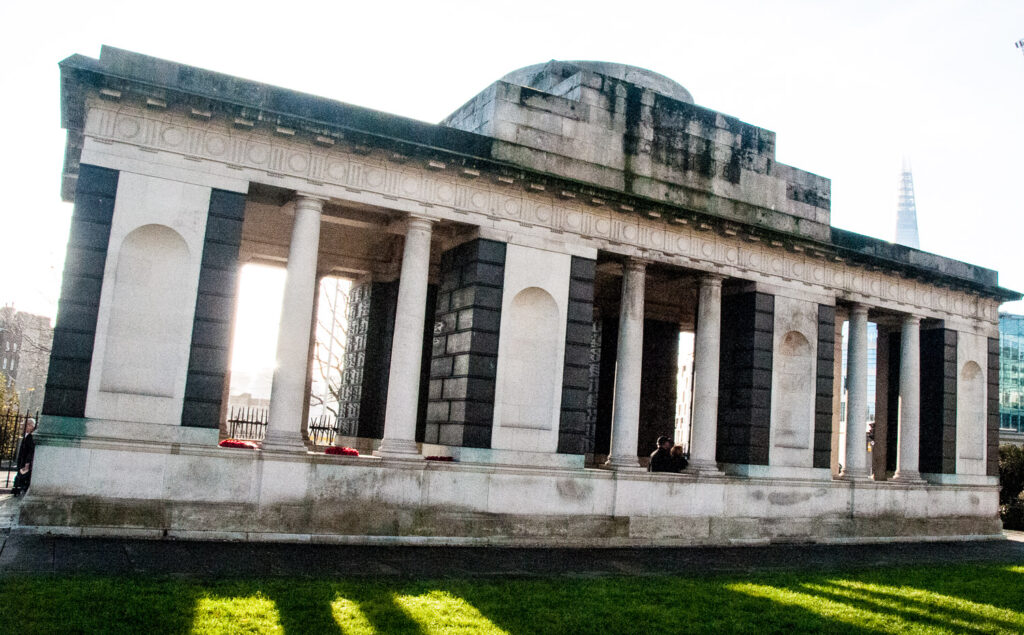
The Second World War extension, which commemorates almost 24,000 casualties, was designed by Sir Edward Maufe, with sculpture by Charles Wheeler. It was unveiled by Queen Elizabeth II on 5 November 1955.
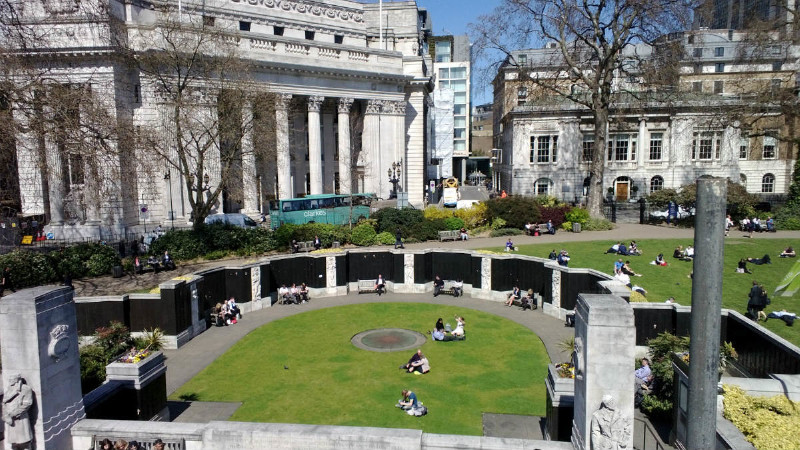
In the background, Neptune (standing on the old Port of London Authority headquarters) points towards the sea …
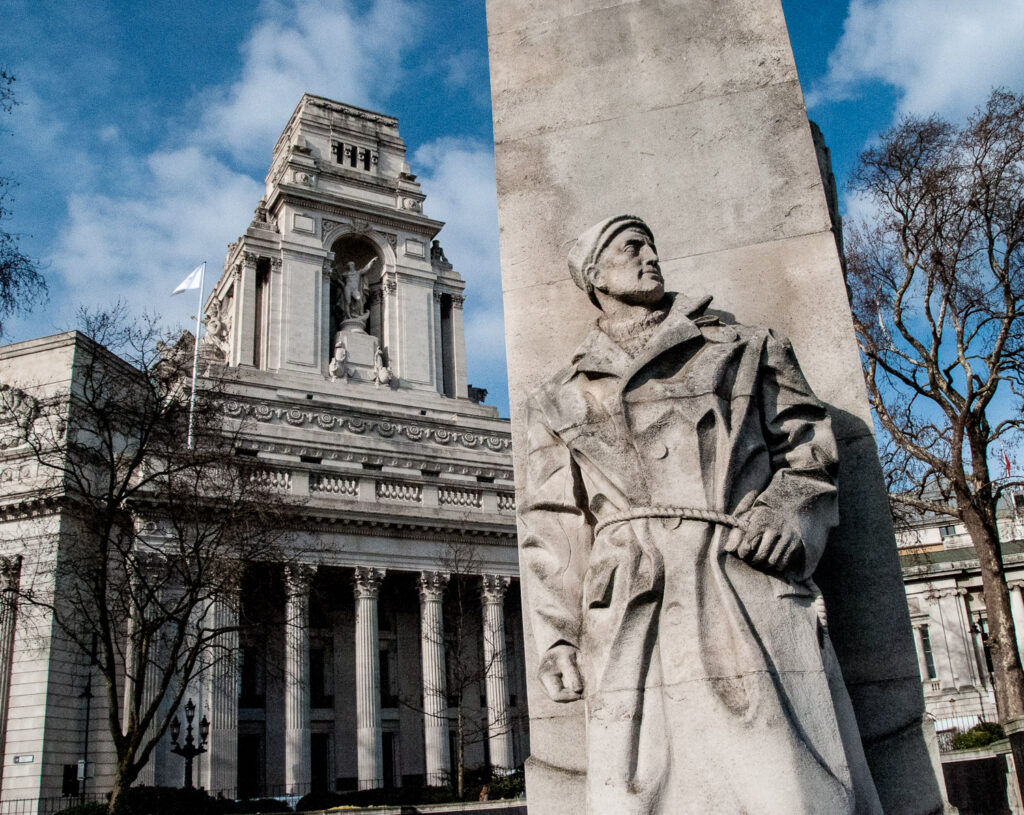
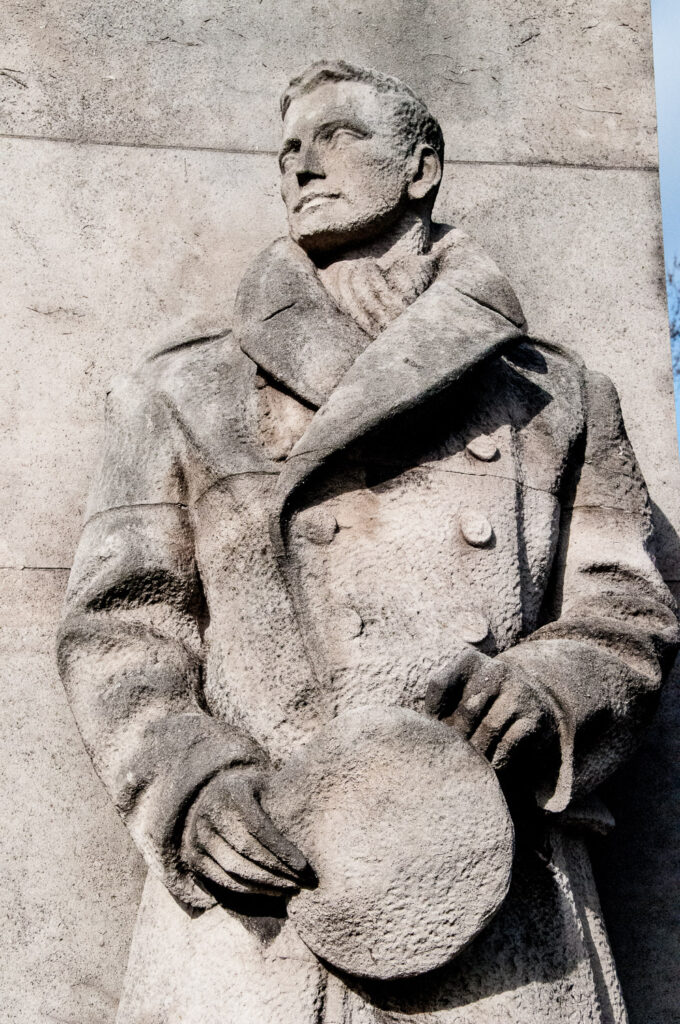
Within the garden the walls are overlaid with bronze plaques on which the names of the men and their ships are inscribed in relief. At regular intervals, between the inscription panels, are allegorical figures representing the Seven Seas. Here is one of them, Neptune with his trident …
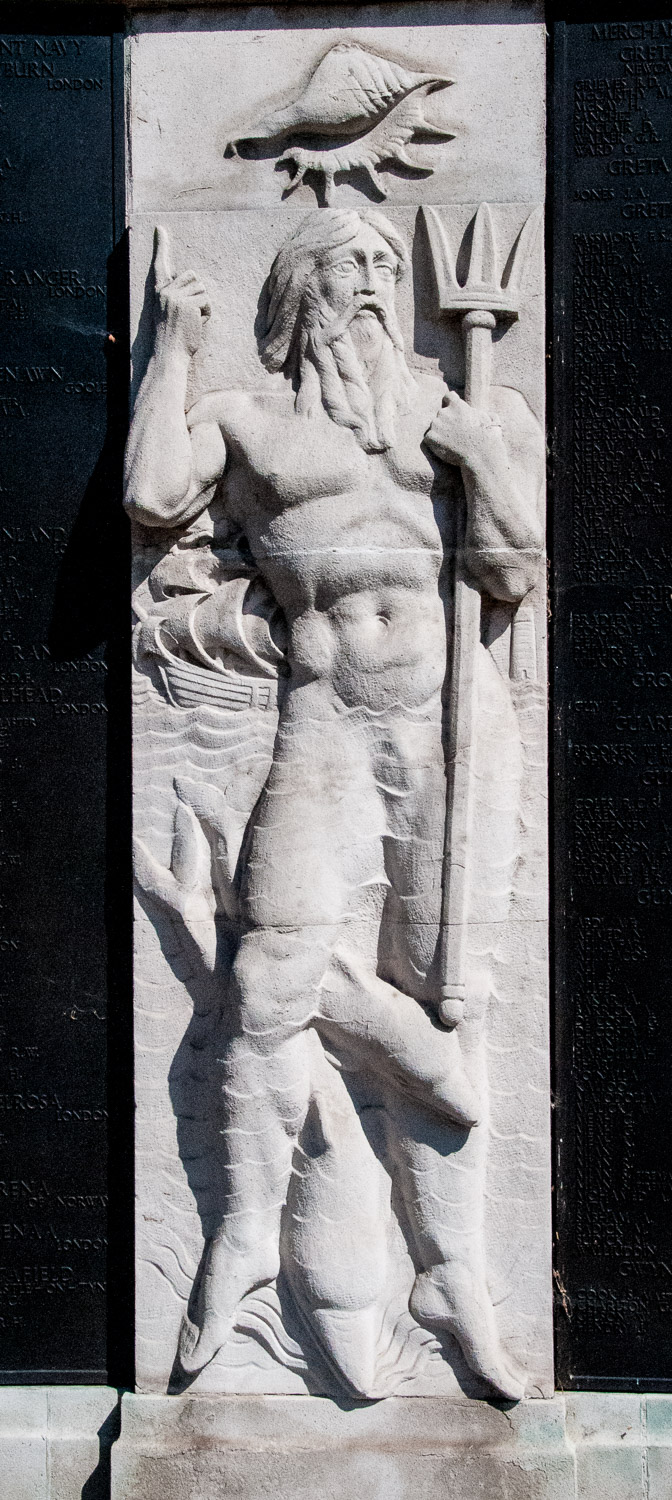
And another, a mermaid combing her hair …
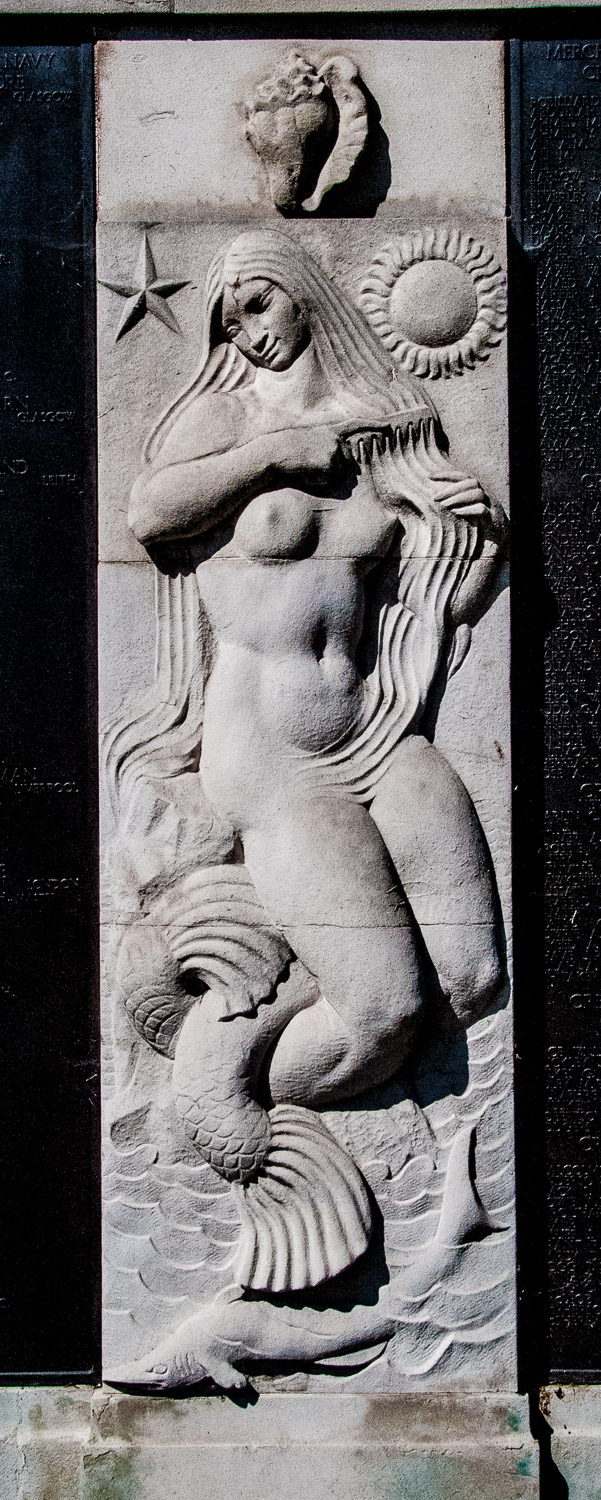
Images from my visit last November …
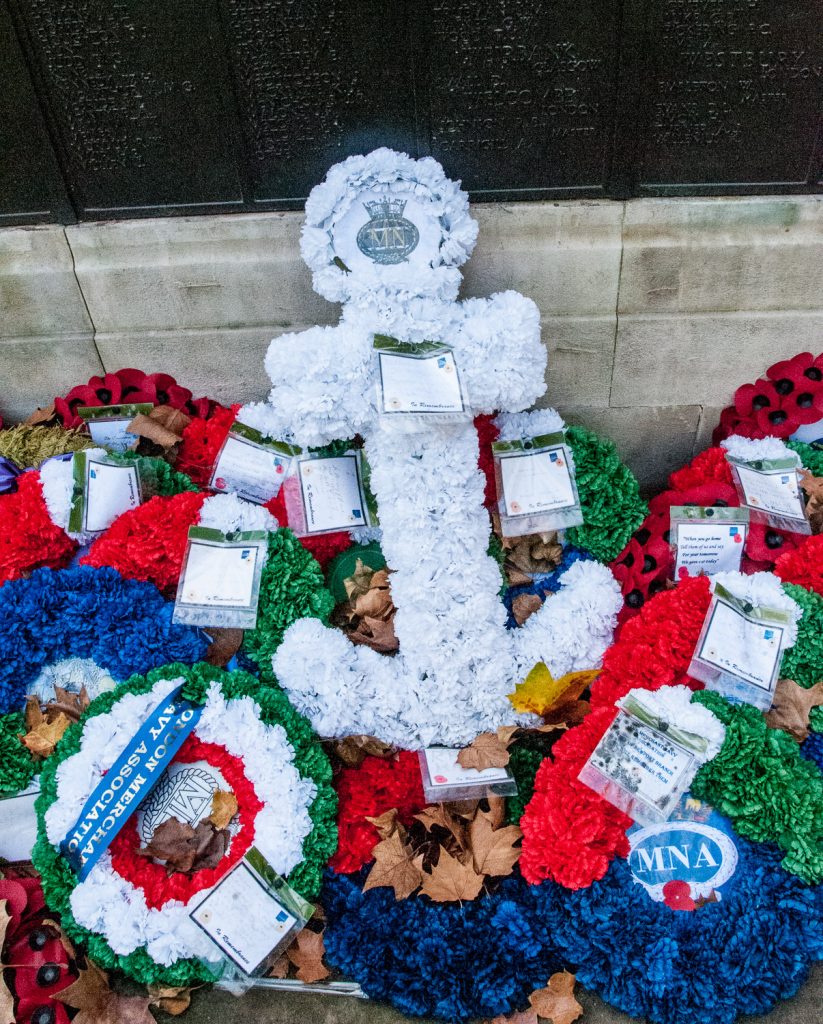
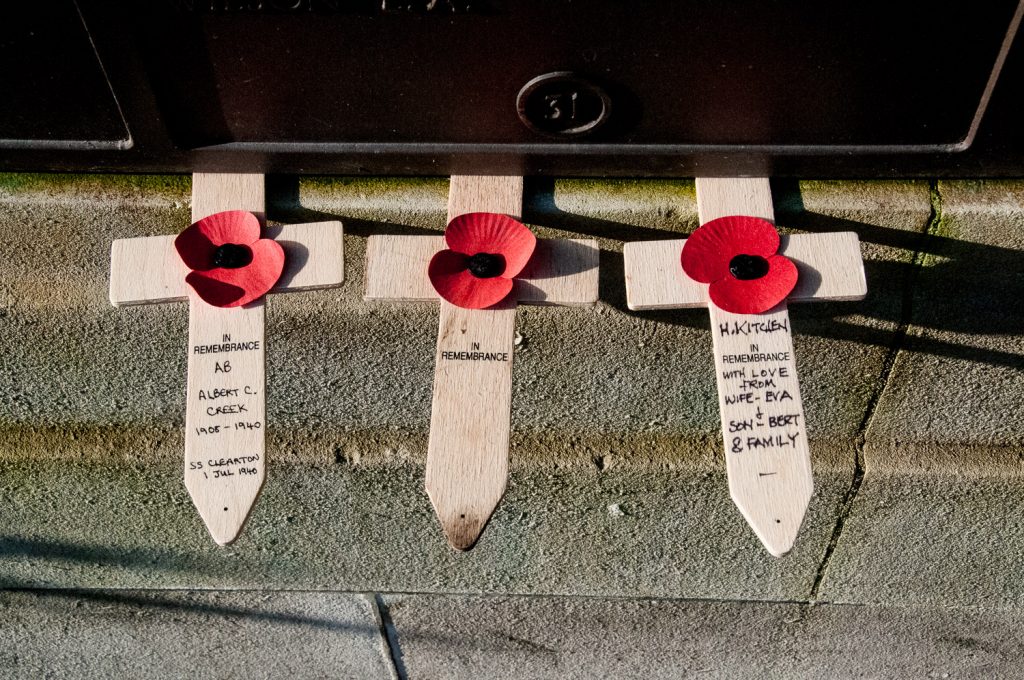
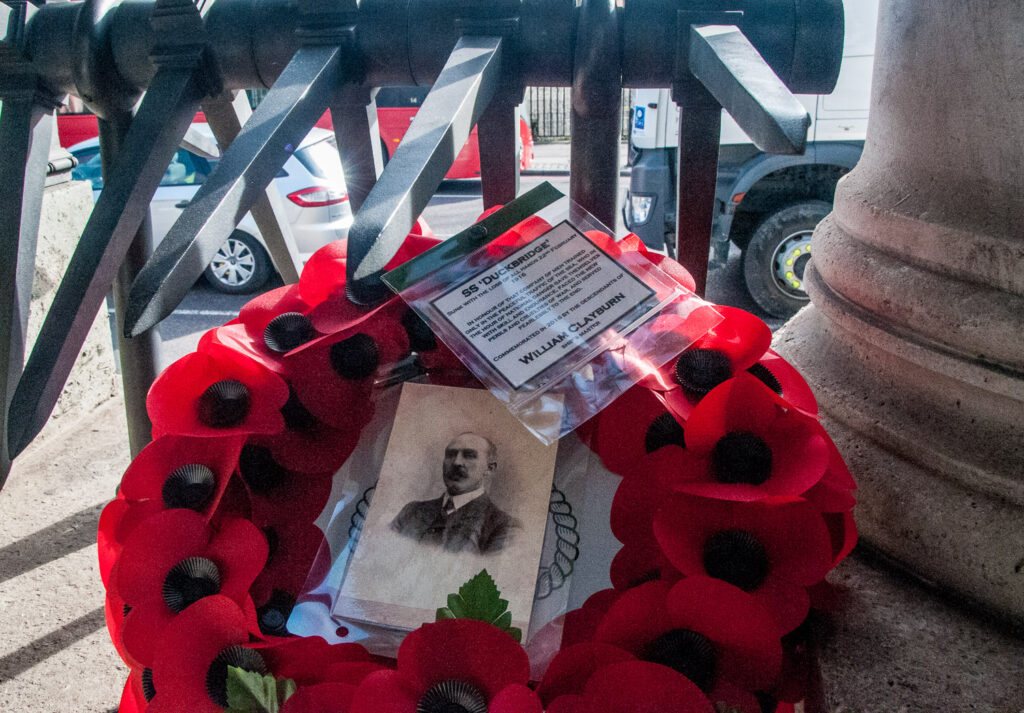
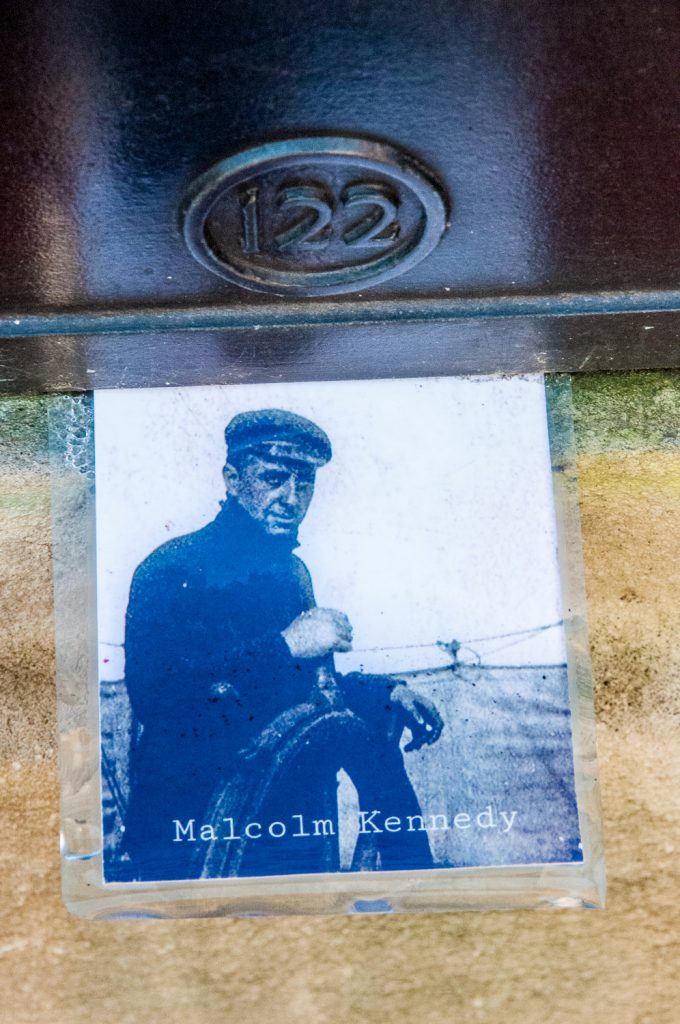
I noticed a small cross resting on one of the allegorical figures, just above the dolphin’s head …
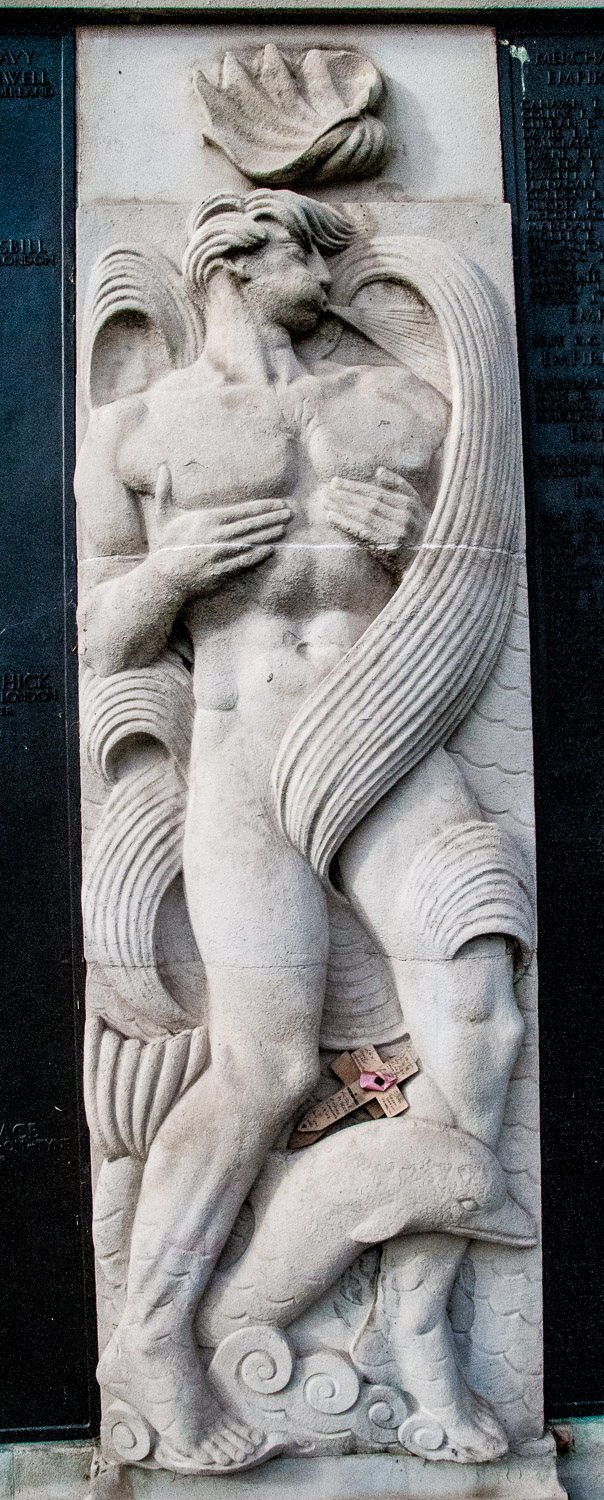
Here it is in close up …
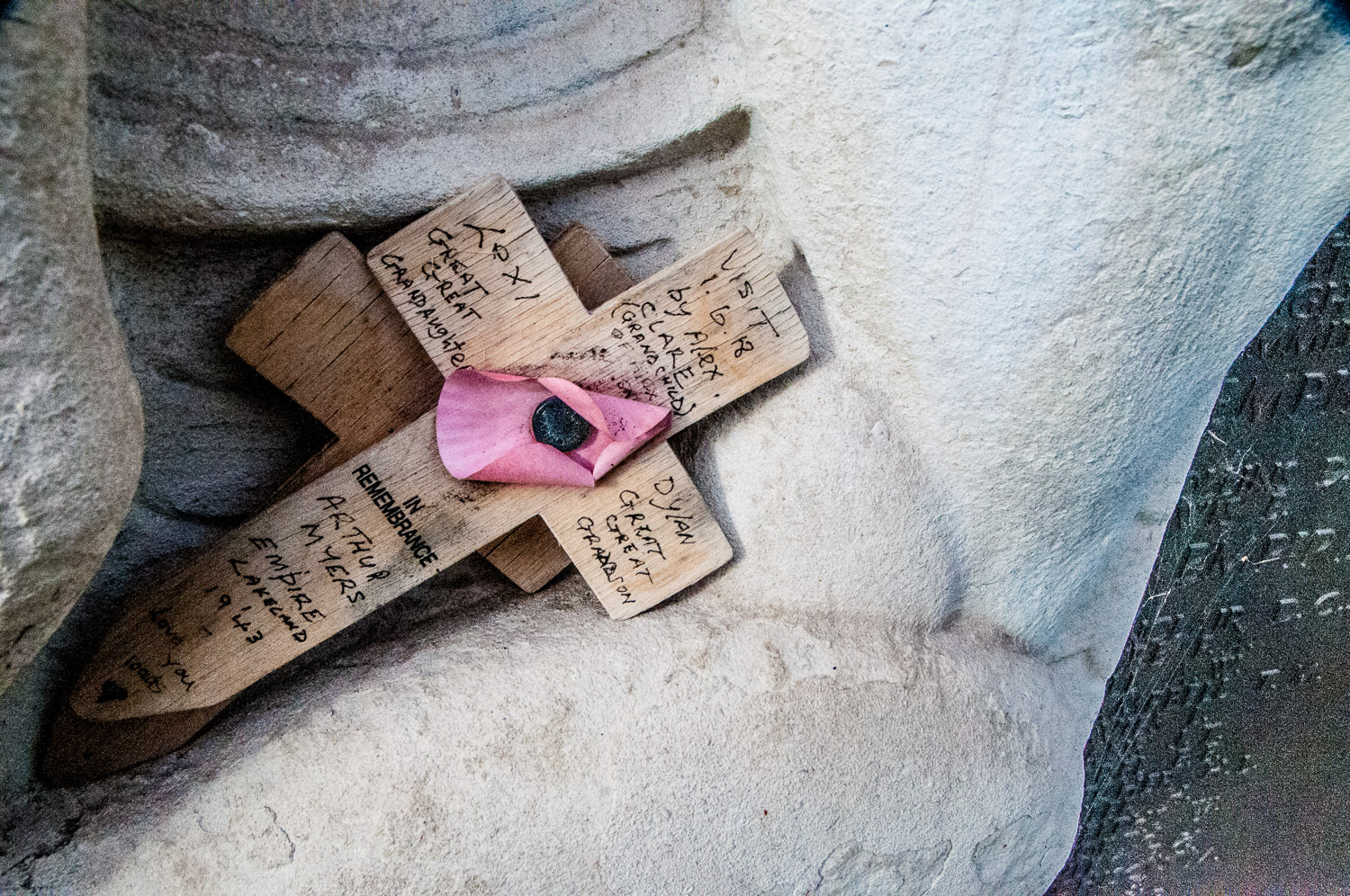
How wonderful. Arthur Myers remembered by a grandchild and two great, great grandchildren. His ship, the Empire Lakeland, was sunk by a U Boat on 11 March 1943.
You can read the full blog here – it’s entitled Lest we forget.
One of the City’s most fascinating sights is the Watts Memorial in Postman’s Park …
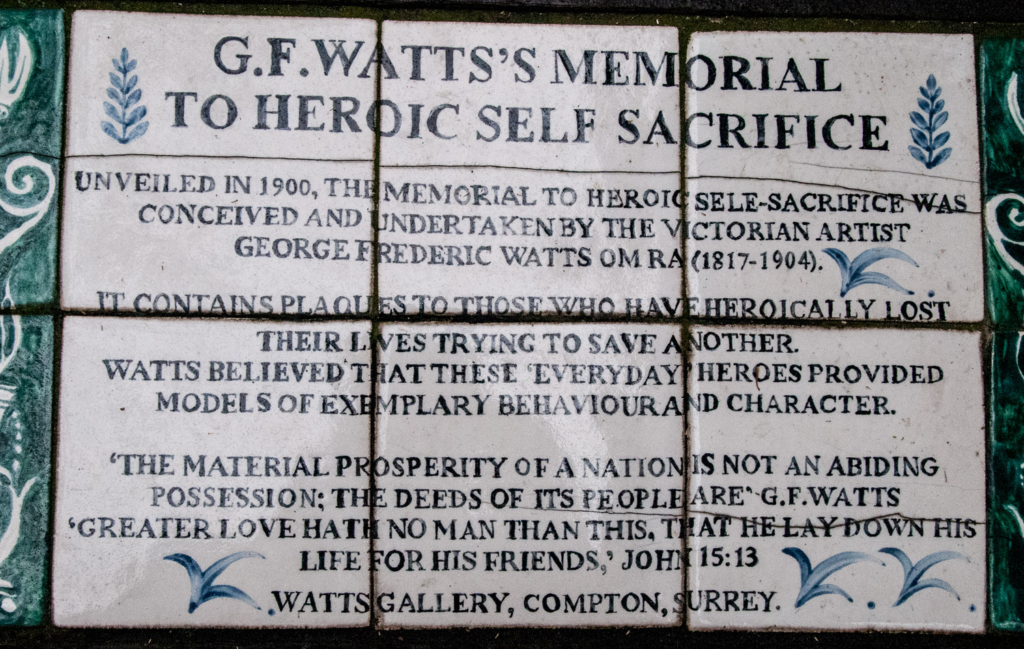

Among the beautifully designed plaques you will see one dedicated to ‘the little hero’ John Clinton …
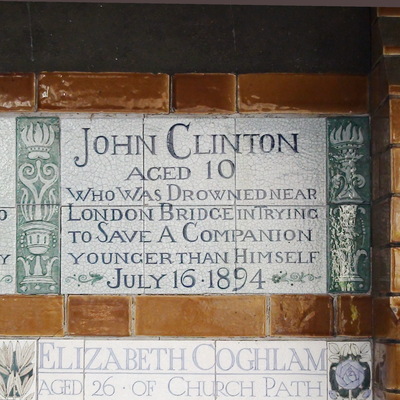
He was only 10 when he dived into the Thames to save another little boy’s life. Unfortunately, after the rescue, John himself slipped back into the water and drowned. According to his father this wasn’t his first brave act, having saved a baby from a fire and tearing down burning curtains that were threatening the house. Both acts were commemorated in this illustration …
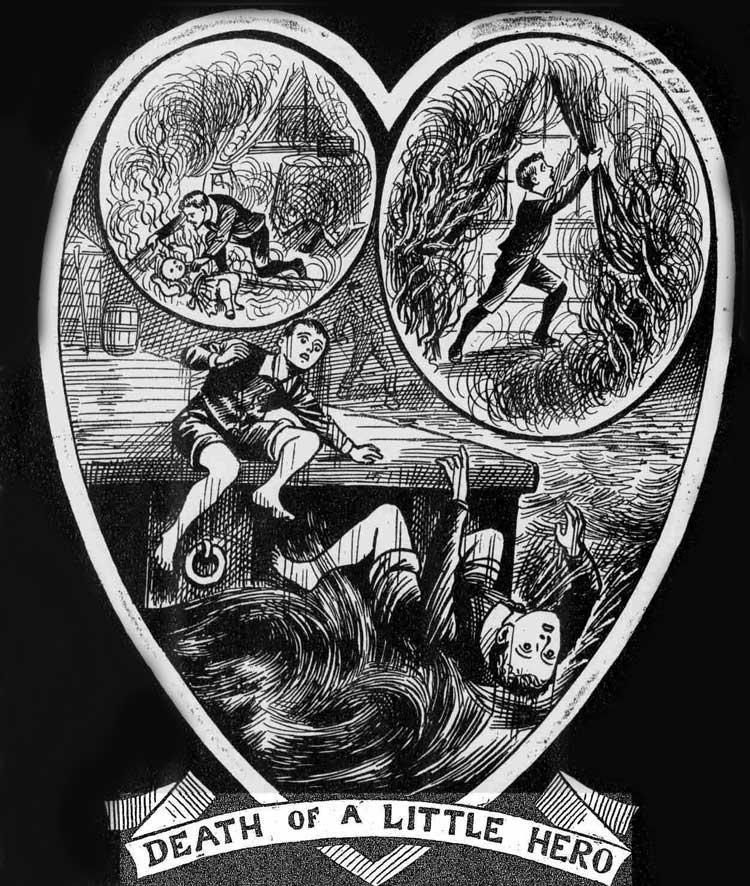
From The Illustrated Police News, 28th July 1894. Copyright, The British Library Board.
His funeral was widely reported …
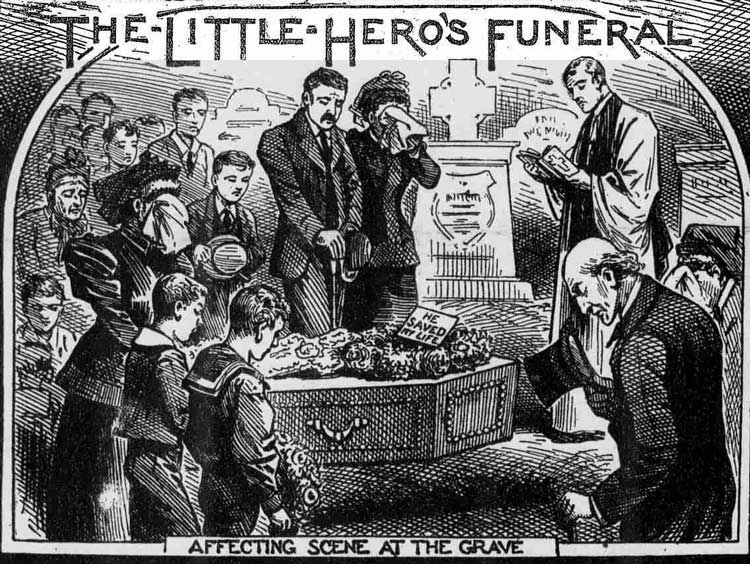
Finally, by way of light relief, here are a few of my City animals.
Dr Johnson’s cat Hodge …
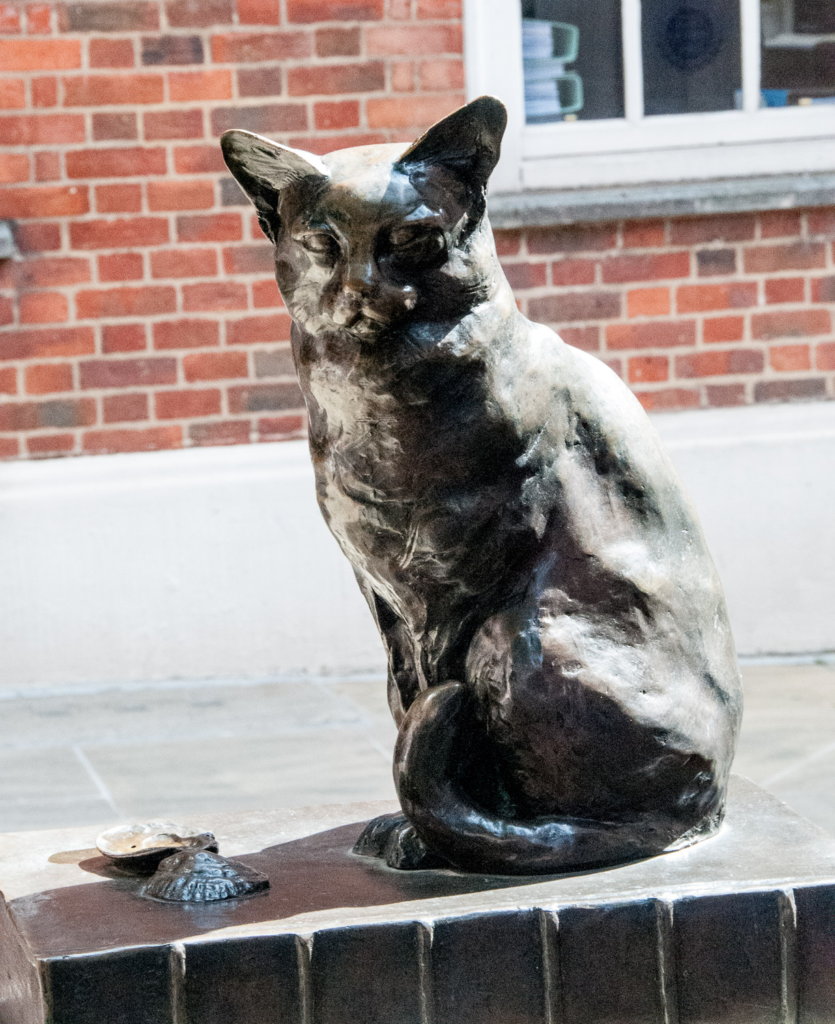
And, in the same blog, the little mice with a piece of cheese in Philpot Lane …
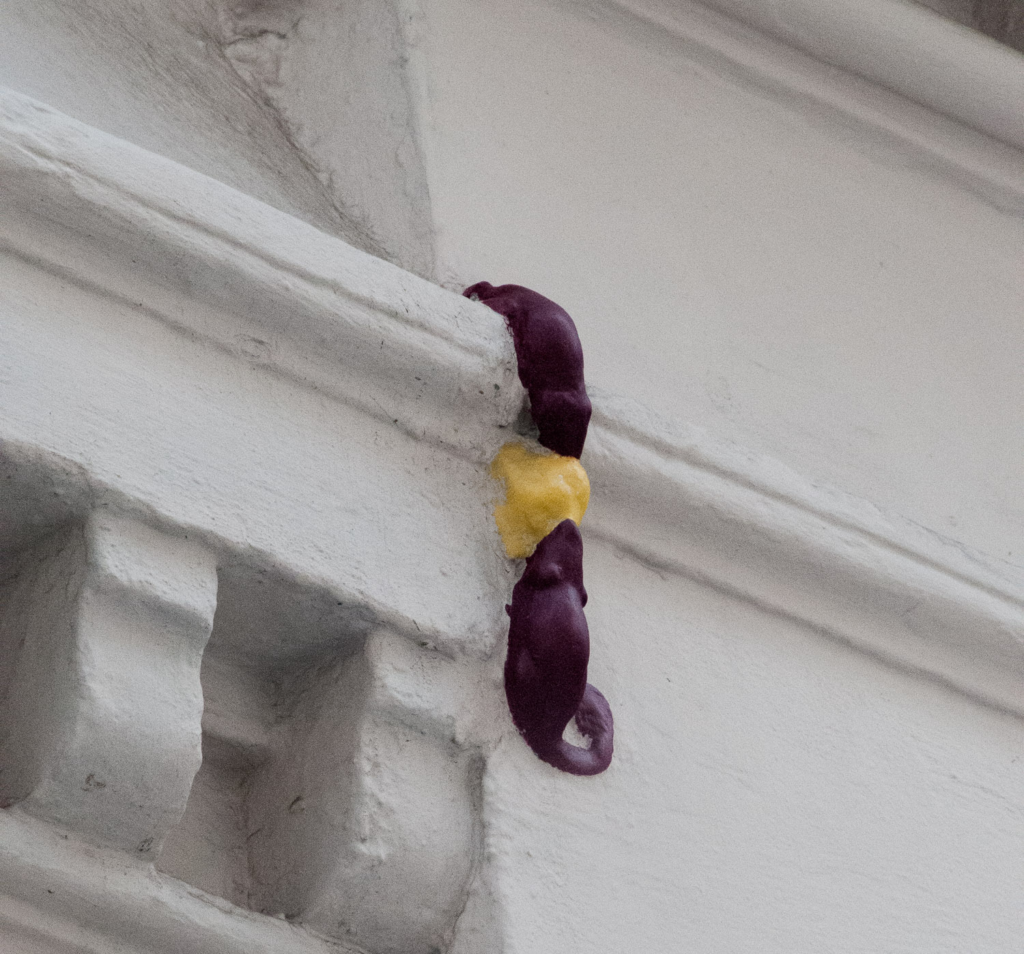
I hope you enjoyed that little trip down Memory Lane. Normal service will resume next week.
If you would like to follow me on Instagram here is the link …
